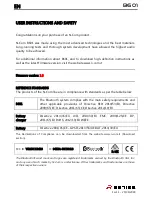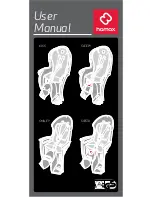
User’s Guide – version 3.5
NetFlow Tracker
29
•
Bi-directional Conversations – adds extra columns showing the traffic and packets
sent from destination to source and the bi-directional totals for each conversation.
•
Source Endpoints – shows the IP addresses and corresponding applications that
were the source of most traffic or packets. The top source endpoints inwards on a
link are the remote services using your bandwidth. As with the conversations
reports, grouped applications are not used.
•
Destination Endpoints – shows the IP addresses and corresponding simple
applications that were the destination of most traffic or packets.
•
Endpoints – shows the IP addresses and corresponding simple applications that
were the source or destination of the most traffic or packets.
•
Server-Client Sessions – shows the pairs of source server applications and
destination addresses that exchanged most traffic or packets. A session might
represent, for example, a web browser downloading several web pages with
images from a web server.
•
Client-Server Sessions – shows the pairs of connected source addresses and
destination server applications that exchanged the most traffic or packets. A
session could represent a client’s requests to a web server for several pages and
images.
•
Sessions – shows the pairs of connected IP addresses using any recognised
application that exchanged the most traffic or packets.
•
Bi-directional Sessions – adds extra columns showing the traffic and packets sent
from destination to source and the bi-directional totals for each session.
QoS Reports
•
Types of Service – shows the ToS levels with most traffic or packets.
•
Differentiated Services – shows the DiffServ code points with most traffic or
packets.
Network Reports
•
Source ASes – shows the autonomous systems that were the source of most
traffic or packets. Note that a switch does not know anything about ASes.
•
Destination ASes – shows the autonomous systems that were the destination of
most traffic or packets.
•
ASes – shows the ASes that were the source or destination of the most traffic or
packets.
•
AS Pairs – shows the pairs of connected ASes that exchanged most traffic or
packets.
•
Bi-directional AS Pairs – adds extra columns showing the traffic and packets sent
from destination to source and the bi-directional totals for each AS pair.
•
Source Networks – shows the IP subnets that were the source of most traffic or
packets. Note that a router may not know the subnet of a particular address, and
a switch never knows it.
•
Destination Networks – shows the IP subnets that were the destination of most
traffic or packets.
















































